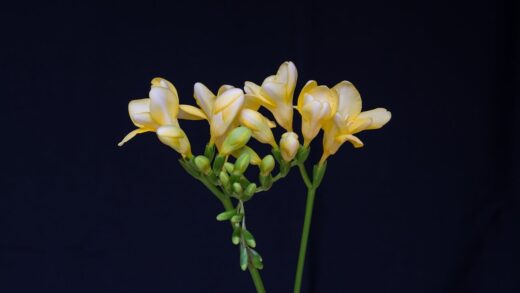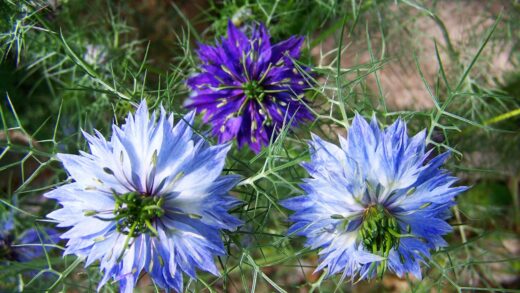Strategic pruning and cutting back are essential maintenance practices that can transform a good blanket flower display into a truly spectacular one. While these resilient plants will grow and flower without much intervention, a little thoughtful trimming can dramatically increase the number and duration of blooms, improve the plant’s overall shape and sturdiness, and promote better health. Understanding when and how to prune allows you to work in partnership with the plant’s natural growth habits, directing its energy towards creating a fuller, more floriferous, and longer-lasting presence in the garden. These simple techniques are some of the most effective tools a gardener has to maximize the performance of this vibrant perennial.
The most common and impactful form of pruning for the blanket flower is a practice known as deadheading. This simply involves the removal of spent flowers after they have faded and begun to wither. The primary purpose of deadheading is to prevent the plant from completing its natural life cycle of producing seeds. When a flower is allowed to fade and form a seed head, it sends a hormonal signal to the plant that its reproductive mission is accomplished, causing the plant to slow down its production of new buds. By removing the old flower, you interrupt this signal and trick the plant into producing more blooms in a continued effort to set seed.
Deadheading offers more than just the promotion of new flowers; it also significantly improves the plant’s appearance. A blanket flower dotted with withered, brown flower heads looks tired and unkempt. Regularly removing these spent blooms keeps the plant looking fresh, clean, and vibrant, focusing the visual attention on the brilliant colors of the active flowers. This simple act of grooming can elevate the look of the entire garden bed. It is a small investment of time that yields a large reward in both the quantity of flowers and the overall aesthetic of the plant.
The process of deadheading is simple and can be a pleasant, meditative garden task. For a clean cut, it is best to use a pair of bypass pruners or sharp scissors. Follow the stem of the faded flower down to the point where it meets a set of leaves or a side shoot where a new bud may be forming. Make your cut at this junction. This not only removes the unsightly spent flower but also encourages the plant to branch out from that point, leading to a bushier and more robust plant structure over time. For the best results, deadhead your plants regularly, perhaps every few days during the peak blooming season.
The art of deadheading for continuous blooms
Deadheading is the single most effective technique for extending the flowering season of the blanket flower from a few weeks into several months. The biological imperative of an annual or perennial plant is to reproduce, which for the blanket flower means creating viable seeds. The entire process of flowering is a means to this end. By consistently removing the spent blooms before they have a chance to develop mature seeds, you effectively keep the plant in a state of reproductive urgency. It will continuously channel its energy into producing more flowers, trying again and again to complete its life cycle.
More articles on this topic
The key to successful deadheading is consistency. It is not a task to be done once a month, but rather a continuous process throughout the growing season. Try to make a habit of walking through your garden every two to three days with a pair of shears, snipping off any flowers that are past their prime. Catching them as soon as they start to fade is most effective. This regular attention prevents the plant from ever expending significant energy on seed development and ensures a virtually unbroken succession of vibrant new blooms from early summer often until the first hard frost.
When deadheading, it is important to cut the stem back to a point of active growth. Simply snapping off the flower head is better than nothing, but it leaves a bare, unattractive stem behind. For a healthier and more aesthetically pleasing result, trace the flower stem down to the first lateral leaf, side stem, or emerging bud. Making your cut just above this point encourages the plant to direct its energy into that new growth, promoting a bushier habit and more flowering points. This method avoids leaving a cluster of leafless stems, which can die back and potentially become a site for disease.
While the goal of deadheading is to prevent seed formation, you might choose to stop this practice late in the season. Allowing the final flush of flowers in the autumn to go to seed has two potential benefits. First, the seed heads can provide a valuable food source for finches and other seed-eating birds during the winter months, adding life to the dormant garden. Second, blanket flowers can readily self-sow in the garden. Allowing some seeds to mature and drop may result in a new generation of volunteer seedlings the following spring, ensuring the continued presence of these cheerful flowers in your landscape.
Mid-season shearing for rejuvenation
For blanket flower plants that have become particularly leggy, sparse, or untidy by the middle of summer, a more drastic form of pruning known as shearing can be employed. This is especially useful after the first major flush of blooms has passed and the plant is starting to look tired. Shearing involves cutting back the entire plant by about one-third to one-half of its height. While this may seem severe, the plant will respond with a burst of fresh, compact growth and will typically re-bloom with renewed vigor in a few weeks.
More articles on this topic
This rejuvenation pruning is a great way to reset a plant that has been stressed by extreme heat or has simply put on a massive initial flower display. Use a pair of hedge shears or sharp pruners to give the plant an all-over “haircut.” Try to make the cuts just above a set of leaves on the stems. This process removes all the spent flower stems and any lanky growth at once, which is much faster than deadheading individual flowers. After shearing, it is beneficial to give the plant a deep watering to help it recover and fuel the new growth.
The timing for this mid-season shear is important. It is best performed in midsummer, typically in July or early August, depending on your climate. This timing allows the plant sufficient time to regrow, set new buds, and produce a strong second flush of flowers before the end of the growing season. Shearing the plant too late in the summer may not leave enough time for it to re-bloom before the first frost. This technique is particularly effective for perennial varieties of blanket flower, helping to keep the clump compact and vigorous year after year.
Shearing is also a useful technique for controlling the size and shape of the plant. If a blanket flower is encroaching on its neighbors or has developed an open, floppy center, a mid-season cutback can restore it to a tidier, more manageable form. The resulting new growth will be much sturdier and more upright, creating a more attractive mounded shape for the second half of the season. It is a powerful tool for refreshing the appearance of your perennial border when the summer heat begins to take its toll.
The ‘chelsea chop’ for sturdier plants
A proactive pruning technique known as the “Chelsea Chop” can be used in late spring to create sturdier, more compact blanket flower plants that require less staking. Named after the famous Chelsea Flower Show in the UK, which takes place in late May, this method involves cutting back the plant’s stems before it has started to form flower buds. Typically performed in late spring or very early summer, the chop encourages the plant to branch out, resulting in a denser, bushier plant with more stems.
To perform the Chelsea Chop, simply cut back the top one-third to one-half of the plant’s main stems. You can do this uniformly across the entire plant, which will delay the entire plant’s flowering by a few weeks but will result in a more compact and floriferous specimen. Alternatively, you can get creative and cut back only the front half of a clump. This will cause the front stems to bloom later than the untouched back stems, effectively extending the overall bloom time of a single plant clump.
The primary benefit of this technique is the creation of a stronger, more self-supporting plant structure. The resulting stems that grow after the chop are typically shorter and sturdier, making them much less likely to flop over under the weight of their flowers or during heavy rain. This can eliminate the need for cumbersome stakes or plant supports, allowing the plant to maintain a more natural and attractive form. While it may feel counterintuitive to cut back a healthy plant before it blooms, the long-term benefits in plant habit and flower production are well worth it.
This method does delay the onset of flowering, so it is a trade-off between having the earliest possible blooms and having a tidier, more prolific display later in the season. For many gardeners, this slight delay is a small price to pay for a plant that looks better and requires less maintenance throughout the summer. The Chelsea Chop effectively shapes the plant’s destiny for the season, pre-emptively solving the problem of leggy, floppy growth before it even begins and resulting in a plant that is both more beautiful and more resilient.
Autumn and spring cleanup
As the growing season winds down in the autumn, gardeners face a final pruning decision: to cut back or not to cut back. One option is to cut the entire plant back to a height of about 10-15 centimeters after the first hard frost has killed the foliage. This creates a neat and tidy appearance for the winter garden bed. It also removes any potentially diseased foliage or material that could harbor overwintering pests, contributing to better garden hygiene. This is often the preferred method for those who like a clean slate to start with in the spring.
The alternative approach is to leave the spent stems and seed heads of the blanket flower standing throughout the winter. This has several ecological and aesthetic advantages. The architectural forms of the dried stems and seed heads can provide visual interest in the stark winter landscape, especially when capped with frost or snow. More importantly, the seeds provide a crucial food source for birds like goldfinches, sparrows, and juncos, helping to support local wildlife through the lean months. The standing stems can also help to trap insulating snow around the plant’s crown.
If you choose to leave the plants standing for the winter, the cleanup is then deferred to late winter or early spring. Before the new basal growth begins to emerge, you should cut down all of the old, dead stems from the previous year. Use sharp pruners to cut them back as close to the ground as possible without damaging the new shoots that are beginning to sprout from the crown. This spring cleanup clears the way for the new growth to receive sunlight and air, and it gives the garden a fresh start for the new season.
Regardless of whether you do your cleanup in the autumn or the spring, it is an important final step in the annual pruning cycle. Removing the old, dead material prevents it from smothering the emerging new growth and reduces the chances of diseases carrying over from one season to the next. This final cutback completes the cycle of care, preparing the plant to channel all of its energy into the fresh shoots that will become the foundation for another spectacular summer-long display of color.




















